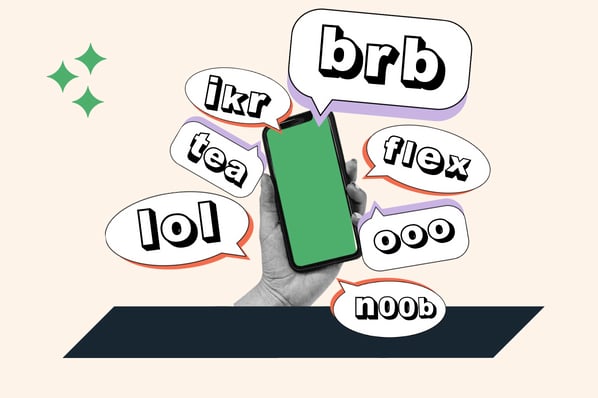Welcome to The Science Behind Success -- a blog series that explores the best ways to help our brains perform better at work. With psychological research and interviews with leaders in the field, we're showing you how psychology can help you overcome workplace obstacles and excel in your career. Because a little mindset change could go a long way.

Let's start with a seemingly easy question -- why do some workplace teams perform better than others?
If you're anything like me, you're probably thinking, "A good team consists of people who feel their work is purposeful, and are motivated by similar rewards."
Alternatively, perhaps you're thinking, "A good team consists of people who are, simply put, good at their jobs."
In 2012, to answer this very question, Google launched an initiative known as "Project Aristotle". They gathered Google's top organizational psychologists, statisticians, and engineers, and asked them to study hundreds of teams at Google to figure out why some teams did remarkably better than others.
They considered the question from every angle -- were the best teams made up of people with similar interests, motivations, or personalities? Or, maybe the best teams were a mix of introverts and extraverts? Alternatively, perhaps the best teams were simply a collection of people with the most impressive educational backgrounds?
Ultimately, Google found one norm was more critical than anything else for making a team work: a concept known as "psychological safety".
You might've heard this term before. A simple Google search of "psychological safety" yields results from major publications, including The New York Times, Harvard Business Review, and Forbes.
However, it's relatively new rise in popularity is credited, in part, to Amy Edmondson, who coined the term in her 1999 research study on workplace teams.
Here, I sat down with Edmondson, professor at Harvard Business School and author of the new book, The Fearless Organization: Creating Psychological Safety in the Workplace for Learning, Innovation, and Growth, to learn more about why psychological safety matters for business innovation, the risks involved in not having psychological safety, and how teams can increase psychological safety in their own workplaces, today.
But first, let's explore how Edmondson discovered psychological safety in the first place.
Edmondson's Accidental Encounter with Psychological Safety
In the mid-1990s, as a first-year doctoral student, Amy Edmondson set out to investigate whether high-performing medical teams made more or fewer mistakes than low-performing teams.
To conduct her research, Edmondson collected survey data to indicate whether teams were high-performing or low-performing, and then compared that data to statistics on which teams made the most mistakes. Simple, right?
However, when she put the data side-by-side, she noticed something puzzling: her highest-performing teams weren't make the fewest mistakes, they were making the most.
How could that be possible?
Why were the best hospital teams messing up consistently, while the less powerful teams were making considerably less errors?
In her book, Edmondson describes one moment as a 'eureka' moment. "What if the better teams had a climate of openness," she writes, "that made it easier to report and discuss error? The good teams, I suddenly thought, don't make more mistakes; they report more."
Since her initial findings, Edmondson has studied psychological safety across numerous companies, organizations, hospitals, and even government agencies. She's a Professor of Leadership and Management at Harvard Business School, and her TED Talk, "Building a psychologically safe workplace" has been watched over 350,000 times.
Before diving into my interview with Edmondson, it's critical to note -- psychological safety isn't equivalent with kindness, as I'd originally suspected.
For instance, you might feel like your coworkers are incredibly nice to you. They ask about your weekend, remember your birthday, and even invite you for after-work drinks.
And yet, at meetings, maybe you still find it difficult to speak up. Perhaps you're nervous you'll look stupid or you've seen how closed-off your manager is to new ideas, so you figure, What's the point?
When speaking with me, Edmondson described a psychologically safe work environment as "one in which people absolutely take seriously and believe that it will be without punishment, without negative consequences. That they're able to speak up with work-relevant ideas, questions, concerns, mistakes, and problems."
"Simply put, it's an interpersonal environment where people believe their voice is welcome."
Psychological safety is about creating a space where new ideas are both encouraged and expected. It's about leaders who ask each of their employees for feedback and are truly receptive to the feedback they receive; and it's about any employee, whether entry-level or senior executive, feeling supported to voice when they've made mistakes, knowing those mistakes could lead to innovation, not embarrassment.
Ultimately, psychological safety isn't just a "nice to have" for team bonding and workplace culture -- it's a necessity for company growth and long-term success.
Next, let's dive into Edmondson's take on how you can enact psychological safety in the workplace, why it matters, and what might happen if you don't.
Amy Edmondson's Tips on Cultivating Psychological Safety
1. Recognize its importance to both innovation and growth.
There are some risks to not having psychological safety that are relatively obvious. For instance, your company might have a high turnover rate if employees are unhappy or don't feel comfortable bringing their authentic selves to the office.
But even more importantly, psychological safety is critical to innovation. As Edmondson told me, "Innovation happens in a psychologically safe environment, full stop. Without it, you're at risk for failing to innovate, which won't just jump out at you like, 'Oh, there was a big failure.' You know? It's the innovation that didn't happen that's hard to see at the time."
"But over time, the company becomes less relevant, less vital, in the marketplace because it didn't innovate."
Pixar is a prime example.
As Edmondson writes in her book, Pixar co-founder Ed Catmull "credits the studio's success, in part, to candor … when candor is a part of workplace culture, people don't feel silenced."
But Catmull did more than encourage candor -- he institutionalized it. For instance, he created a process called "Braintrust", in which a small group meets every few months to assess a movie and provide feedback to the director. The iterative process forces employees to speak openly about what's working in a movie, and what isn't.
The Braintrust has rules -- for instance, feedback must be about the project, not the person. The filmmaker can't become defensive, or take criticism personally. And comments are merely suggestions -- not prescriptions -- and must come from a place of empathy.
Creating a safe space to iterate, share ideas, and brainstorm is critical, but it's equally vital that the leader demonstrate psychologically safe behavior themselves. For instance, Catmull demonstrates honesty and humility in his own language, admitting, " … early on, all our movies suck."
By openly showing his employees he believes there's plenty of room for improvement, Catmull makes it feel ridiculous not to share ideas.
In the early 1990's, Pixar implemented a Braintrust during the creation of Toy Story. Due in part to the Braintrust, Toy Story became the highest grossing film of 1995.
2. Create structures and systems to encourage psychological safety, and show leaders how to model psychologically safe behavior.
I asked Edmondson whether she believed creating a psychologically safe environment requires structure and systems -- like Pixar's Braintrust -- or whether it can be cultivated simply by encouraging leaders to remain open, receptive, and honest.
Edmondson told me your company needs both. "Leadership has the job of modeling behaviors that work, that matter, but also putting in place structures and systems that make it easier for people to bring their ideas forward, to bring their concerns forward. Ultimately, it's really both. There's the behavioral dimension of leadership that is very important and powerful in shaping others' behaviors, but there's also the wonderful structures and systems that make it just a little bit easier."
Here are a few tips for leaders looking to adopt psychologically safe behavior:
- Replace criticism with curiosity. If you believe your employee messed up, don't assume you know why. State the negative behavior as an observation, and then ask them to explain to you why it happened. For instance, you might say, "I noticed you haven't been hitting your deadlines over the past two weeks. I assume there are a few factors that are inhibiting your ability to get your work done. Can you walk me through what those are?" Additionally, don't spend too much time on fault -- instead, focus on resolution. Say something like, "I'd like to brainstorm a few solutions with you, if that's okay. How can I best support you?"
- Admit when you make a mistake. An employee is never going to speak up in meetings if he/she feels everyone else in the room is perfect. By admitting when you've made a mistake or misspoken, you're allowing others in the room to do the same.
- Ask for feedback from employees, and remain thankful for any feedback you receive. One of the easiest ways to create a psychologically safe environment is to ask your employees what you could be doing better to support them or make them feel open to sharing ideas and opinions -- but if you shut them down when they try to give feedback, you'll never create a psychologically safe space. Instead, take their feedback seriously. Write it down in a notebook or on your computer, consider strategies that might help you strengthen your leadership skills for the team, and respond, "Thank you so much for your feedback. I really appreciate it."
Additionally, you might create structures and systems by providing rules and regulations to your meetings. For instance, if you're conducting a brainstorm, there are various opportunities for you to mix up the format to achieve honesty and openness.
For example, you might ask your employees to write down their suggestions ahead-of-time, anonymously. Alternatively, maybe you pose a question before the meeting -- "In today's meeting, I'd like everyone to come with the answer to this question: 'What's one way we can improve our Facebook campaign before launch?'"
Ultimately, it's critical you create a space in which employees feel safe sharing new ideas, even if those ideas go against your team's status quo. If you don't, you truly risk losing out on long-term growth for your team, and your company.
3. Measure psychological safety.
Psychological safety can vary team-to-team within an organization. In fact, Edmondson found the teams she studied in the hospital back in 1999 varied drastically in terms of their levels of psychological safety.
If you're a senior executive, it might be difficult to determine where strengths and weaknesses lie in your organization in terms of psychological safety. It's best, then, to measure it objectively.
To measure a team's psychological safety, you might ask team members to take Edmondson's survey, with questions like the following:
- When someone makes a mistake in this team, it is often held against him or her.
- In this team, it is easy to discuss difficult issues and problems.
- In this team, people are sometimes rejected for being different.
- It is completely safe to take a risk on this team.
- It is difficult to ask other members of this team for help.
To measure her responses, Edmondson uses a seven-point Likert scale (from strongly agree to strongly disagree). For additional tools and resources, check out Edmondson's tool kit, Is Yours a Learning Organization?
4. Make psychological safety a priority for your entire organization.
Now that we've explored the importance of psychological safety, and a few different methods to increase psychological safety in your own workplace, let's dive into one final scenario: what might happen if you don't practice psychological safety.
In Edmondson's book, she describes a real-life scenario with Wells Fargo as a prime example of the risks you run as a company by not implementing psychological safety measures.
Here's the gist: in 2015, Wells Fargo, a U.S. bank, encouraged employees to cross-sell a minimum of eight different financial service products to existing customers -- they even had a slogan, "Going for GR8".
While a great idea in theory, it was impractical -- most Wells Fargo customers couldn't afford the eight different products. However, leadership continued to push their employees. There was no space for openness or candor -- leadership didn't encourage or welcome feedback from their employees.
Instead, as Edmondson writes, people believed they'd be fired if they didn't hit their quota.
So, ultimately, employees felt they needed to cross an ethical line. They began creating fake customers, or lying to customers to trick them into signing up for new products.
All of which is to say -- having psychological safety isn't just advantageous for long-term company growth. It's also an absolutely critical component for ensuring you don't run into major business failure.
Your boots-on-the-ground employees know your customers. They have perspectives and opinions you might not. Ultimately, it's vital your leadership team create a space in which these employees feel safe and encouraged to bring forward their opinions, suggestions, and disagreements.
You'll have a happier, healthier, more productive company as a result.






![How Neuromarketing Can Revolutionize the Marketing Industry [+Examples]](https://blog.hubspot.com/hubfs/neuromarketing_1.webp)




